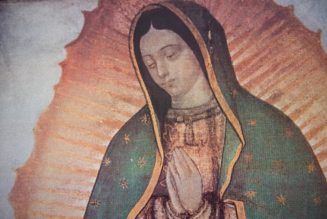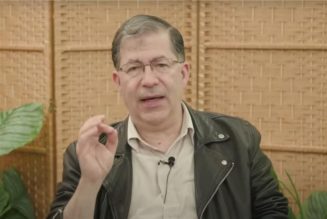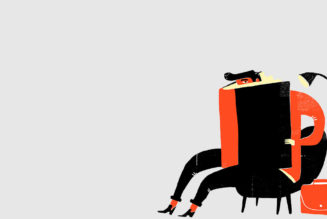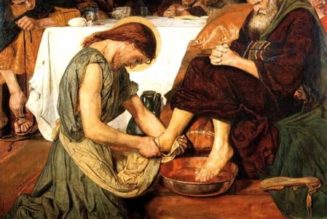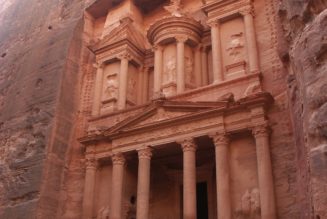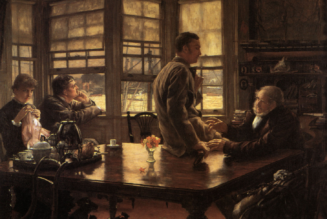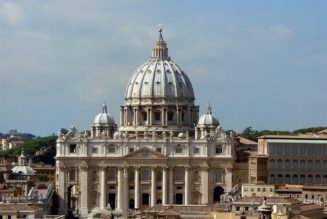This summer, the “Creation of Adam,” one of the Vatican’s most extraordinary works of art, is leaving Rome—sort of. A traveling exhibition that showcases high definition photographs of Michelangelo’s 34 frescoes is visiting several cities in the continental United States.
The exhibit, called “Michelangelo’s Sistine Chapel,” is touring North America, with stops planned in Portland, Indianapolis and Albuquerque, among other cities. The exhibit offers visitors the unique perspective of viewing Michelangelo’s famous artwork closer than he could have ever imagined.
“Michelangelo’s Sistine Chapel” is touring North America, with stops planned in Portland, Indianapolis and Albuquerque, among other cities.
I saw the show in May in Hartford, Conn., where the hot, sunny weather added to the illusion that I was briefly visiting the Italian peninsula instead of the Connecticut Convention Center. The photographs are life-sized and thus easier to study than the original frescoes in Vatican City. They are all visible without craning your neck and bumping into the tourist or pilgrim behind you.
Unlike the Sistine Chapel, which is bathed in natural sunlight, the photographs are hung against black curtains, which makes all of the colors more vibrant. The subjects’ proximity makes their gazes more intense.
The self-guided exhibit delves into details of each fresco, in addition to examining how the pieces as a whole connect to and complement one another. The spoken commentary is like a good homily, in which the priest explains why the Scripture readings were selected and how they fit together for that particular Mass.

Although each photograph is numbered, visitors can start anywhere and proceed however they wish. The Sistine Chapel’s centerpiece, “Creation of Adam,” is immediately to the left of the entrance. But God waited until the sixth day to create Adam, so I started on what would be the Sistine Chapel’s perimeter. There I was greeted by the painting of the young woman holding an open scroll and intently looking over her shoulder at the entering visitors. The placard in front of the image identifies her as the “Delphic Sibyl,” who looked into the future at the Greek god Apollo’s temple in Delphi. Even though the curators have brought her down to the floor from her original position high up on the ceiling, you still have to look up to her. You can almost see the thoughts working behind her eyes and half expect her to put down the scroll in her hand at any moment.
Along the perimeter of the room there are 12 photos that showcase seven Hebrew prophets and five sibyls. Both sibyls and prophets bear a prophecy about Jesus Christ, ranging from his incarnation to his ultimate sacrifice. Even a sibyl from Apollo’s shrine in Greece holds a prophecy. Walking by each of them, you can see the subtleties of the range of emotions—curiosity, worry, sadness—in their reactions to what they foresee about Jesus’ life and death.
Among the sibyls and prophets, there are several photographs showing Michelangelo’s depictions of the distant ancestors from Christ’s family and the line of David. They are seated, crouching and lying down, almost always in groups of three, reminiscent of the Holy Family. The mothers, although anonymous, occupy a central position in the artwork.
Next I visited the central panels of the ceiling, which feature stories from the beginning of the Book of Genesis: God separating the light and the darkness, the expulsion from the Garden of Eden, and the Flood, to name a few. Creation and conflict builds up in large swaths of earthy colors.

These photographs hang from the ceiling at a slight angle, but still close to the visitor. There are seats available for easier viewing and contemplation. The center panel in the Sistine Chapel is the “Creation of Eve.” Unlike Adam in the “Creation of Adam,” the mother of humankind is not yet fully created. Her eye sockets are black and she stares at God almost lifelessly. It is a detail easily overlooked when viewed from a distance, but glaringly obvious when seen from close up, as this exhibit makes possible.
I ended my visit with the “Last Judgment.” The towering artwork, in which Jesus directs his angels to raise up and cast down souls, is located behind the altar in the Sistine Chapel. Angels hold a small book listing the names of those going to heaven, and a larger, wider book of those going to hell—a grim review of the human race. It is a predominantly blue painting; the skies that dominate the work are clear except for about a dozen heavily populated clouds, where angels and saints gather.
Mary, dressed in blue and pink, sits next to her son. She looks down with sympathy and advocates for souls. Out of all the photographs, “Last Judgment” has by far the most seats provided for viewers. It is a dense piece with a lot to examine. The damned look with horror at the demons waiting for them below. People stumble as they arise from the dead, others visibly sigh with awe and joy as their ascent is aided by angels. I imagine viewers of the painting scanning the crowd next to Jesus, looking for their favorite saint.
Unlike the other photographs that all focus on ancient history, “Last Judgment” is the only one that depicts the future, specifically the viewer’s future. That is worth sitting down and thinking about for a moment.
The unique opportunity to see Michaelangelo’s artwork at ground level enables the viewer to appreciate all the details—the Sybil of Delphi’s gaze into the future, the incomplete Eve’s sooty eyes, and Mary’s plaintive expression during the Last Judgment. It is a personal and engaging experience as the subjects draw you in to contemplate the most dramatic and epic events in the life of Christ and all creation.
Join Our Telegram Group : Salvation & Prosperity
